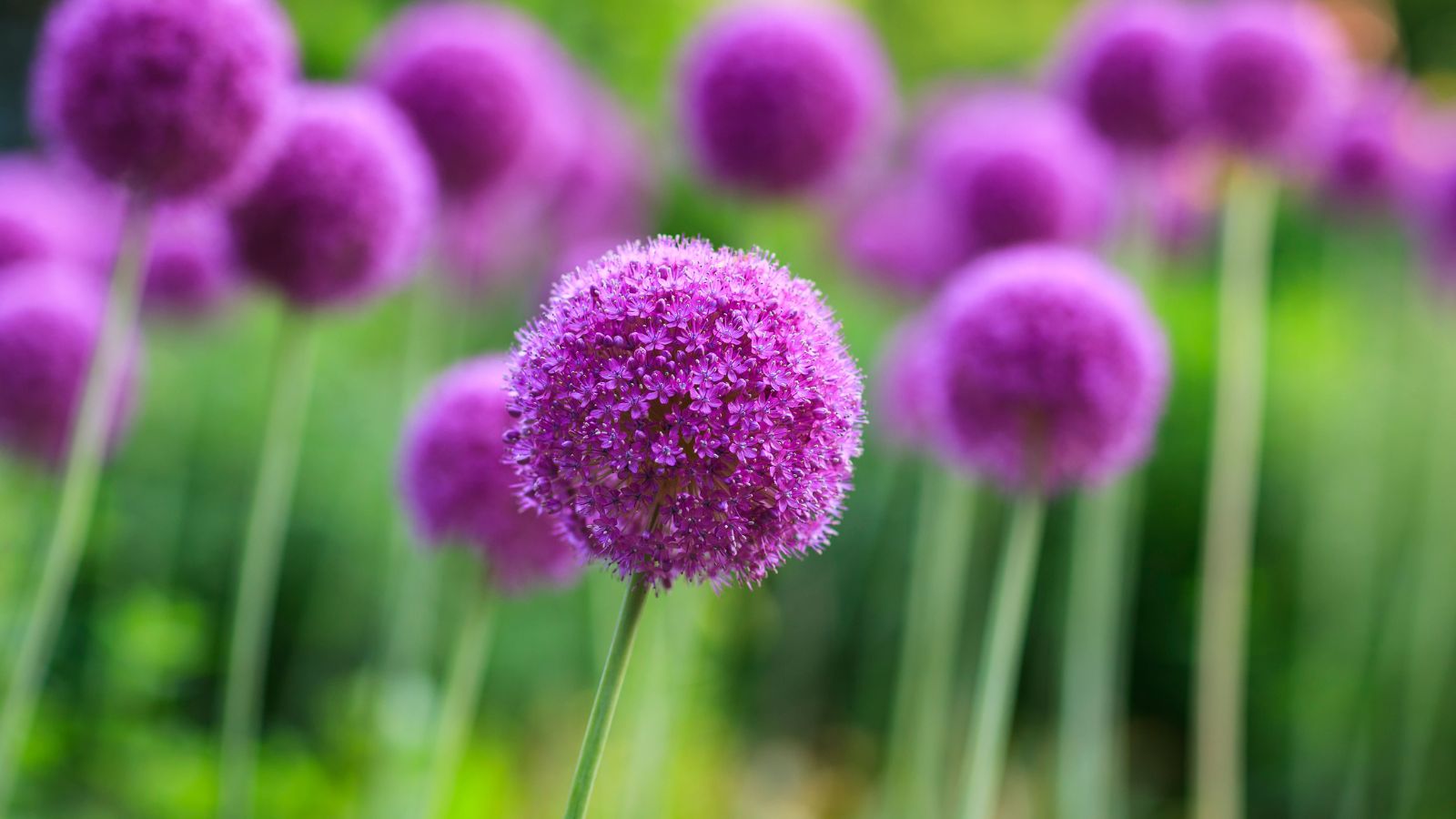When to plant allium bulbs – for spectacular results
Follow our simple guide on when to plant allium bulbs, including expert growing tips


Know when to plant allium bulbs and you can enjoy a spectacular floral display for years to come. With their tall, slender stems topped with pompom blooms, these architectural beauties, look fantastic weaving through beds of herbaceous perennials and as a focal point in pots. Plus, even when their flowers fade, the star-laden seedheads add elegant structure to planting right through winter.
Ranging from a delicate 8 inches high (20cm) up to a magnificent 47 inches (1.2m) there are around 260 species of allium to choose from. Flowers come in practically every shade of purple as well as yellow and white plus they are also adored by bees and butterflies as a valuable source of nectar.
Reaching their best during May and June, these spring bulbs need to be planted in fall, so they can enjoy a cold dormant period before shooting in early spring. Find out exactly when to plant bulbs – specifically allium – for the best results along with expert tips.
When to plant allium bulbs
Planting bulbs in fall is key to a spring show.
‘Alliums, just like tulips and daffodils, should be planted in the fall and will flower from mid-May to the end of June,’ say the experts at iBulb. ‘Alliums will survive the winter. This means you can leave them undisturbed from where they will come up and flower again next year.’
What is the best month to plant allium bulbs?
Best grown in USDA hardiness zones 3-8, Alliums are best planted from September through to late October. ‘Allium bulbs should be planted in fall – once air and soil temperatures have cooled - for early spring bloom,’ says Adelle Hack from White Flower Farm. ‘Gardeners in northerly climes should plant Allium bulbs six to eight weeks before the first anticipated frost.’
‘When you purchase your bulbs,’ adds James Ramnought, SBM Marketing Director, Phostrogen, ‘they should be planted as soon as possible, as prolonged storage will cause them to rot. A healthy bulb should be dry, with no leaves or roots beginning to grow before it is put in the ground. The longer you wait to plant them, the more likely it is that they’ll struggle to flower next season!’
When can I plant allium bulbs in an outside container?
No matter which variety of allium you choose, they can look stunning in a large contemporary style planter. From the large spherical blooms of Christophii and Globemaster to the two-toned egg-shaped beauty allium sphaerocephalon, these blooms are real eye-catchers planted en masse or mixed with other spring bulbs and perennials.
For many, planting allium bulbs is synonymous with falls arrival, acknowledging the quiet fading of the year and planning a color-filled garden for the one to come. Mail-order specialists are useful for getting hold of unusual varieties but do order allium bulbs during late summer. You can also order many allium varieties from Amazon.
‘They should be planted in fall between September and November, before the soil freezes,’ advises Ben Rotteveel, Bulb Specialist at Dutch Grown. ‘You will rarely have to worry about watering them as they actually prefer dry conditions. Choose a sunny spot, water them when you plant them and then just wait for the lovely blooms in late spring and early summer.’
Is it too late to plant allium bulbs in spring?
While it’s not ideal, you can plant allium bulbs in the ground or in pots, as late as March. They won’t flower as well or as promptly in their first year, due to the shortened time period for establishing roots, but they should catch up and perform well in the following years.
Sign up to the Homes & Gardens newsletter
Design expertise in your inbox – from inspiring decorating ideas and beautiful celebrity homes to practical gardening advice and shopping round-ups.

Journalist Jill Morgan has spent over 20 years writing and editing gardening, interior and property features. Titles she has worked on include The English Home, House Beautiful, Ideal Home, Houzz and Modern Gardens and she writes regularly for H&G as a Contributing Editor. Whilst she is a dab hand at renovation projects and DIY, she is happiest when out digging in the garden or planning a new border.
-
 Zooey Deschanel and Jonathan Scott's breakfast nook is an innovative, effective use of kitchen space – it turns a 'dead area' into a cafe-style corner
Zooey Deschanel and Jonathan Scott's breakfast nook is an innovative, effective use of kitchen space – it turns a 'dead area' into a cafe-style cornerJonathan and Zooey have situated an eccentric yet elegant dining area in what may have been an otherwise underused corner
By Hannah Ziegler Published
-
 6 things you should never throw in the trash – and what to do for safe disposal instead
6 things you should never throw in the trash – and what to do for safe disposal insteadFrom batteries to space heaters, experts reveal what not to throw
By Andy van Terheyden Published